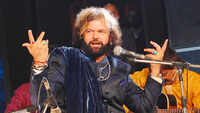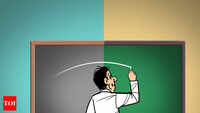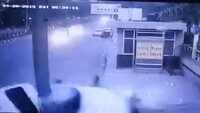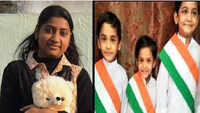Cooking tasty food and speaking like James Bond may help CBSE students get extra marks
Abhishek Choudhari | TNN | Apr 24, 2019, 04:35 IST
Nagpur: Starting from 2019-20 academic session, CBSE students may get an extra few marks in internal exams for cooking up mouth watering dishes and spouting dialogues like Amitabh Bachchan and James Bond. These are all part of suggestions given by CBSE to schools for implementing the concept of ‘joyful learning’ concept in classrooms.
As reported by TOI on March 13, the board was planning to integrate art with teaching and learning process of all academic subjects for Std I-XII. As the first step of achieving that goal, CBSE has mandated two periods of ‘art integrated education/learning’ every week with effect from 2019-20 academic session.
But this ‘art integrated education/learning’ is not to be associated only with the conventional meaning of it, rather seen a process of helping students comprehend the regular subjects better. CBSE explains it best by suggesting schools that a poem can be taught to students by setting it to the tune of a Bollywood number or breaking it up into separate lines and converting them into dialogues spoken in the style of movie stars. This unique teaching methodology, says CBSE, will help students grasp the curriculum content in a better way.
Similarly, one of the suggestions is introduction of culinary arts as a subject for students in Std VI-VIII. Students can learn to cook traditional dishes from different states thus exposing themselves to different cultures. The board has clarified that students will have to take it up only once, but it has to be within the three-year window of Std VI-VIII.
CBSE’s rationale for introducing ‘art education/learning’ stems from the NCERT Position Paper (National focus group on Arts, Music, Dance and Theatre), which says, “ In the current situation, our approach to organize the curriculum is to present knowledge as a package”. The board added that this format of knowledge is then associated with ‘rituals of examinations’ to assess where marks becomes a way of judging competence in the subject area.”
A note from CBSE to principals further stated that watertight compartmentalization of subjects provide fragmented knowledge rather than interrelated and integrated whole. “As a result, knowledge gets divided in boundaries in the school and outside. In the present system, what is already known only gets emphasized, subverting children’s own ability to construct knowledge and explore novel ways of knowing” the CBSE note said.
To counter this, the board says that the universally accepted manner of making learning joyful and innovative is art integrated education. CBSE has defined art integrated education as cross-curricular approach to teaching and learning or teaching of a subject with the help of Art (Visual/performing etc) CBSE says emphasis should be given to learning rather than teaching, and the approach should be participatory, interactive, and experiential rather than instructive.
While principals that TOI spoke to were happy about the concept, they were a bit apprehensive about the time period. “Giving two periods in a week is not very tough but still it will mean rescheduling the current timetable, and taking time away from something else,” said a principal.
CBSE clarified that art integration is not a replacement for art education. “Integration happens only after students have been directly taught the Arts (visual/performing etc). Without this background knowledge, neither the students nor the subject teachers will be able to integrate art in education” said the CBSE note.
As reported by TOI on March 13, the board was planning to integrate art with teaching and learning process of all academic subjects for Std I-XII. As the first step of achieving that goal, CBSE has mandated two periods of ‘art integrated education/learning’ every week with effect from 2019-20 academic session.
But this ‘art integrated education/learning’ is not to be associated only with the conventional meaning of it, rather seen a process of helping students comprehend the regular subjects better. CBSE explains it best by suggesting schools that a poem can be taught to students by setting it to the tune of a Bollywood number or breaking it up into separate lines and converting them into dialogues spoken in the style of movie stars. This unique teaching methodology, says CBSE, will help students grasp the curriculum content in a better way.
Similarly, one of the suggestions is introduction of culinary arts as a subject for students in Std VI-VIII. Students can learn to cook traditional dishes from different states thus exposing themselves to different cultures. The board has clarified that students will have to take it up only once, but it has to be within the three-year window of Std VI-VIII.
CBSE’s rationale for introducing ‘art education/learning’ stems from the NCERT Position Paper (National focus group on Arts, Music, Dance and Theatre), which says, “ In the current situation, our approach to organize the curriculum is to present knowledge as a package”. The board added that this format of knowledge is then associated with ‘rituals of examinations’ to assess where marks becomes a way of judging competence in the subject area.”
A note from CBSE to principals further stated that watertight compartmentalization of subjects provide fragmented knowledge rather than interrelated and integrated whole. “As a result, knowledge gets divided in boundaries in the school and outside. In the present system, what is already known only gets emphasized, subverting children’s own ability to construct knowledge and explore novel ways of knowing” the CBSE note said.
To counter this, the board says that the universally accepted manner of making learning joyful and innovative is art integrated education. CBSE has defined art integrated education as cross-curricular approach to teaching and learning or teaching of a subject with the help of Art (Visual/performing etc) CBSE says emphasis should be given to learning rather than teaching, and the approach should be participatory, interactive, and experiential rather than instructive.
While principals that TOI spoke to were happy about the concept, they were a bit apprehensive about the time period. “Giving two periods in a week is not very tough but still it will mean rescheduling the current timetable, and taking time away from something else,” said a principal.
CBSE clarified that art integration is not a replacement for art education. “Integration happens only after students have been directly taught the Arts (visual/performing etc). Without this background knowledge, neither the students nor the subject teachers will be able to integrate art in education” said the CBSE note.
Making sense of 2019
#Electionswithtimes
View Full Coverage

































All Comments ()+^ Back to Top
Refrain from posting comments that are obscene, defamatory or inflammatory, and do not indulge in personal attacks, name calling or inciting hatred against any community. Help us delete comments that do not follow these guidelines by marking them offensive. Let's work together to keep the conversation civil.
HIDE